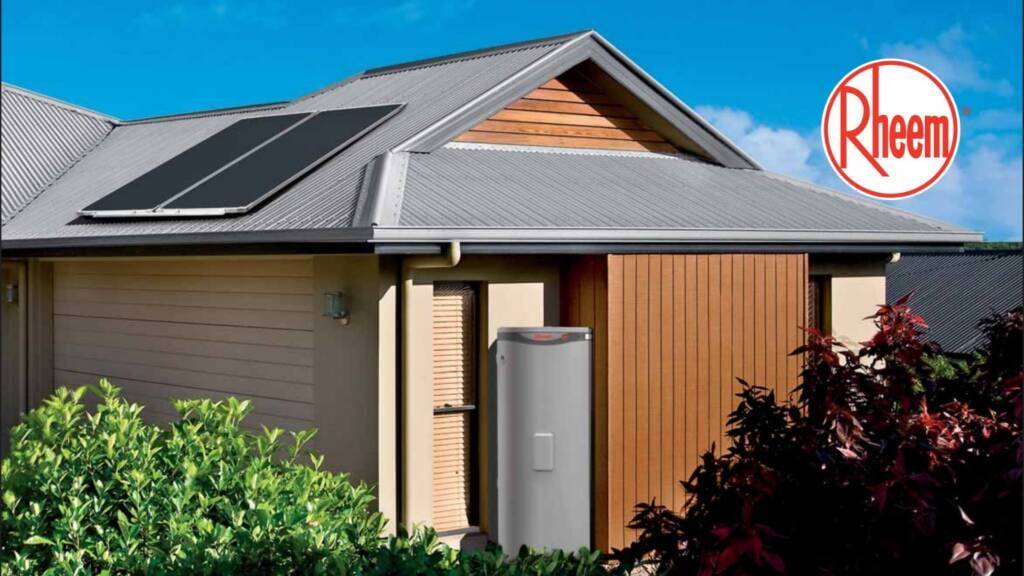One thing that surprises us is how many customers are unaware they have a choice to install their hot water system either inside or outside their home. This decision can affect everything from energy efficiency and space-saving to long-term maintenance and cost, so it’s something worth considering. And it’s not just relevant when building a new home; if you’re replacing an old unit, you can also choose to have the new system installed in a different location.
Understanding the pros and cons of indoor vs outdoor hot water system installation helps you make a smarter investment. That said, let’s break it all down to help you choose the best new hot water system set up for your property.
Why Your Hot Water System Location Matters
People often don’t realise that most hot water unit locations aren’t random. An experienced, quality installer understands that where a system is placed can directly affect its performance, efficiency, and lifespan. Strategic placement helps minimise heat loss, improves water delivery times, and makes access for maintenance much easier. Your local climate can also be a determining factor, whether that’s coastal humidity, dry heat, or frosty winters. Importantly, there are also plumbing codes in Australia to comply with.
What Is an Outdoor Hot Water System?
As the name suggests, outdoor units are installed outside the home, typically along an exterior wall or in a service area. They’re especially popular in Australian homes due to our generally mild climate.
Common examples include the more standard gas hot water systems, especially continuous flow gas models, as well as electric hot water systems. Both of these are designed to handle outdoor conditions with proper installation.
Solar hot water systems are typically installed outdoors, for obvious reasons. Depending on the setup, the storage tank may be installed on the roof alongside the panels or at ground level, known as a split system. In some states and territories, outdoor installation is required to ensure optimal solar access and system performance.
Finally, you have heat pump hot water heaters. As heat pump water heater units extract heat from the surrounding air to heat water, they require plenty of space and airflow to operate efficiently. As a result, outdoor installation is standard.
Pros of Outdoor Hot Water Systems
- Frees up indoor space – No need to sacrifice a cupboard, laundry corner, or bathroom wall.
- Easier to install in existing homes – Ideal for retrofits, with fewer disruptions to interior walls or plumbing.
- No ventilation concerns – Gas systems can vent directly into open air without the need for flues.
- Easier access for servicing – Technicians can perform maintenance without entering the home.
Cons of Outdoor Hot Water Systems
- Exposure to weather and potential damage – Wind, rain, sun, and storms can shorten lifespan without proper shielding.
- May require frost protection – In cooler regions, systems need insulation or valves to prevent freezing.
- Visible system may affect property aesthetics – Some homeowners prefer to avoid bulky units on outdoor walls.
What Is an Indoor Hot Water System?
Indoor hot water systems are installed inside the home, often in the laundry, bathroom or cupboard. They’re a practical choice in homes with limited outdoor access, such as inner-city homes, apartments or in regions where extreme weather protection is essential.
Common indoor installations include electric storage systems and gas storage systems, both of which are built to operate safely and efficiently within enclosed spaces.
Pros of Indoor Hot Water Systems
- Protected from the elements – No exposure to sun, rain, or frost, helping extend the unit’s lifespan.
- Often quieter – Insulated indoor walls can muffle operational sounds, especially useful in tightly built homes.
- Energy efficient in cold climates – Indoor heat helps reduce energy loss, especially in winter months.
- Shorter pipe runs – Installing an indoor system closer to bathrooms or kitchens can reduce the time it takes for hot water to reach taps, making for an efficient hot water system placement.
Cons of Indoor Hot Water Systems
- Takes up internal space – You’ll need to dedicate room inside your home, which can be a drawback in smaller properties.
- May need flue or ventilation – Gas systems require safe exhaust ventilation, adding to installation requirements.
- More complex to install in existing buildings – Retrofitting an indoor unit can involve extra plumbing, structural changes, or compliance checks.
Key Factors to Consider When Choosing
So, the question remains — which is right for your home: an indoor or outdoor hot water system? The answer depends on a few key factors. Firstly, you may not have a choice, as your property layout may determine where a system can physically fit. Additionally, your budget could also influence installation complexity or the type of unit you choose.
Other factors may be out of your control. For example, if you’re choosing solar or heat pump systems, then they will likely be installed outside. Your local climate also plays a role, particularly for systems exposed to weather or reliant on ambient air; then it’s wise to have your system installed indoors.
If it’s energy efficiency you’re after, some locations simply perform better, especially when located inside closer to your bathrooms or kitchens. And finally, Australian building codes and council regulations may require certain installations to meet safety and compliance standards.
Your best bet is to speak to a professional for expert advice.
Still Not Sure? Ask a Licensed Installer
Choosing between an indoor or outdoor hot water system isn’t just about preference; it depends on your property layout, climate, budget, and future energy goals. A licensed hot water system installer can assess your home and provide expert recommendations tailored to your needs.
If you’re weighing up where to have your system installed, get professional advice. Contact us today or request a quote to ensure your hot water system is installed in the best location for performance, compliance, and long-term savings.
